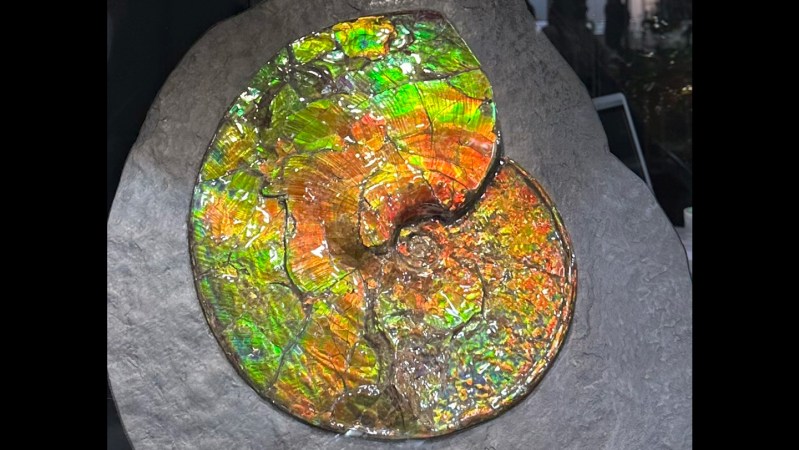
Research into the captivating colors of ammolite gems has revealed the scientific principles behind their striking appearance. This study, published on October 30, 2023, in Scientific Reports, sheds light on how the fossilized remains of ancient ammonites produce their remarkable rainbow shimmer. The findings highlight the role of aragonite crystal layers in achieving the gem’s unique optical properties.
Ammolite, derived from the fossilized shells of extinct squid-like creatures known as ammonites, has intrigued scientists for years. While the vibrant colors are associated with the layers of nacre, or mother-of-pearl, not all ammonite fossils exhibit similar brilliance. To determine the factors that contribute to ammolite’s vivid colors, researchers conducted an in-depth analysis of its microscopic structure.
Exploring the Science Behind the Shimmer
The research team, led by materials scientist Hiroaki Imai from Keio University in Yokohama, Japan, utilized electron microscopy to investigate ammolite specimens from the 75-million-year-old Bearpaw Formation in Alberta, Canada. Their findings revealed that the mesmerizing colors of ammolite arise from light reflecting off aragonite layers that are uniformly thick and separated by precisely measured gaps.
Imai noted that ammolite pieces with thinner aragonite plates reflected shorter wavelengths of light, resulting in deep blues, while thicker plates reflected longer wavelengths, producing rich reds. The team discovered that the ideal separation of 4 nanometer air pockets between the layers was crucial for generating distinct, vibrant colors. In contrast, other nacreous materials like abalone and nautilus exhibited different characteristics, where the layers contained a greater thickness of organic material or were more tightly packed, leading to less vibrant appearances.
“Initially, I thought it might have some kind of special coating,” Imai said, reflecting on his first encounter with ammolite at a mineral fair in Tokyo. “I was astonished to learn it was the excavated fossil itself.”
Implications for Future Research
The research has broader implications for understanding other gemstones as well. The team plans to investigate silica gemstones known as opals, which are formed through the weathering of rocks. “Some types of opal exhibit vivid structural colors,” Imai explained. His team aims to determine whether the principles uncovered in the study of ammolite can also be applied to these colorful stones.
The study not only enhances the understanding of ammolite but also opens doors for further exploration into the optical properties of various gemstones. By revealing the connection between structural features and color production, this research contributes valuable insights into both the natural history of gemstones and their potential applications in jewelry and design.
The findings stand as a testament to the intricate relationship between nature and science, showcasing how ancient fossils can continue to captivate and educate in the present day.







